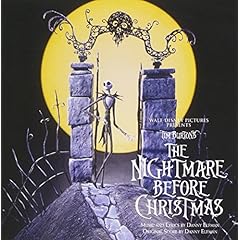To say that I’ve been looking forward to this game has been an understatement. I’ve never taken to the 3D Sonic titles, and although I’ve flirted with trying the handheld games, they never quite clicked for me. So after all the talk about how this game is supposed to be the spiritual successor to Sonic 3 or Sonic & Knuckles, I was quite excited. I counted down the days, I got up bright and early today, and I waited until the afternoon to download it. I’m not sure when it finally was available, but I finally got it a little while ago. I had to sign up for a full PlayStation Network account just to buy the game, but that’s a tale for another day.
The graphics are amazing, eye-popping, and just what I’d expect. Part of the reason why I waited until today (and waited most of today as well, as it turned out) was to get the PlayStation 3 version. The sound interestingly is more of a throwback to the older games’ soundtracks. I like it. The Genesis Sonic the Hedgehog music is some of my video game music; probably because I would hear it for hours on end back when I was in grade school.
Unfortunately, the best graphics and sound can’t save a bad game. I’m not ready to declare Sonic 4 a bad game just yet, as I’ve only played through the first zone. But so far I haven’t liked what I’ve seen.
First, the play control is bad. This game is supposed to be a direct throwback to the older Genesis games. Too bad they didn’t spend enough time replicating the controls. I noticed this almost immediately as my mind and motor controls went into a ‘retro Sonic’ mode. But the behaviors of Sonic after each button press, which are ingrained into my gray matter, didn’t work as expected. The most jarring example is Sonic’s momentum. In earlier Genesis games, Sonic had momentum in the air if you run and jump off the right side of a cliff, then let go of the right D-pad button, the blue hedgehog would still continue to go to the right. Not so in this game. In fact, it’s quite unrealistic no matter what type of game it is. When you jump into the air and let go of the D-Pad, Sonic immediately stops moving horizontally. In previous games, you had to jump at a small platform, then press the D-pad in the opposite direction, to compensate for over-shooting. Not so in this game: just jump until you’re over the small platform, release the D-pad, and you fall onto. Whether or not this is better is irrelevent. It’s different. That’s what counts. From the very beginning, I had to re-train my brain. For a game that’s supposed to pick up right where the last Genesis title started, how could this have gotten by all the quality control?
The other major fault I’ve noticed with the game is a problem I’ve noticed with the other recent Sonic 2-D platformers. In Sonic the Hedgehog games, you’re supposed to go fast, right? That’s kind of the point of the whole thing. Unfortunately, in this game if you go fast the developers punish you. There are enemies and obstacles in the way that hurt you. Unless you know the layout of a level beforehand, you don’t dare go fast (unless you want to lose all your rings). A video game should not be about rote memorization. You should get fair warning before getting hurt; a clever player should be able to go pretty far before losing his rings. This has been true for the last few Sonic 2-D games (Sonic Rush comes to mind). Who is behind this? Why are they still allowed to make Sonic levels?
It could be that this is a fluke, since I’ve only played the first levels. There’s one more infuriating thing about the first zone, and that’s the little chameleons that pop out of the walls and shoot you. The problem is that you’re given zero time to react after one pops out. Every single one I came across zapped me. So maybe the first level was designed by a sadistic jerk, and they kicked him off the project before he could ruin any more levels.
I’ll play through the whole game before passing judgement, because I still hold a hope that this game will be just as good as the classic Sonic games. Please fulfill my hope, Sonic Team.


 George Lucas had quite a lot to do in
George Lucas had quite a lot to do in 

 I have to admit to having been obsessed with Nirvana. When other class of ’02 kids were saving money for Nintendo 64’s in eighth grade, I was saving money for the Nirvana singles box set from CDNow. I was also saving money to order an import (the Japanese Hormoaning CD) from someone via e-mail, of all things! I was the kid sending two blank Maxell’s to some guy for a tape of rare Nirvana stuff. I even had a Nirvana lyrics website that got quite a few hits in its heyday, but has since been supplanted by superiour successors. In short, you could say I was a fan.
I have to admit to having been obsessed with Nirvana. When other class of ’02 kids were saving money for Nintendo 64’s in eighth grade, I was saving money for the Nirvana singles box set from CDNow. I was also saving money to order an import (the Japanese Hormoaning CD) from someone via e-mail, of all things! I was the kid sending two blank Maxell’s to some guy for a tape of rare Nirvana stuff. I even had a Nirvana lyrics website that got quite a few hits in its heyday, but has since been supplanted by superiour successors. In short, you could say I was a fan.




 Updates via
Updates via 